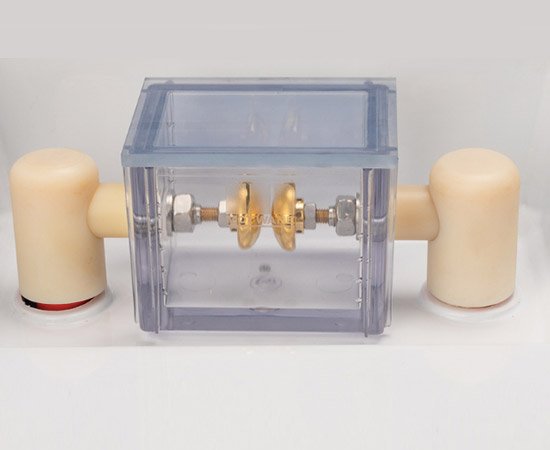Types of insulating Insulating Oil
- Mineral Oil (Petroleum product)
- Naphthenic Oil
- Paraffinic Oil
- Synthetic Oil (Chemical product)
- Silicon Oil
- Bio-based Oil (Vegetable Oil)
Generally, naphthenic and paraffinic-based oils are used more than the other types of oil.
What Causes Oil Deterioration?
The insulating oil in high voltage equipment is subjected to Electrical, Mechanical and Thermal stress during its operation. This results in the contamination of the oil by formation of carbon deposits, Sulphur, acids, various types of gases and sludge which is mainly an oxidation product, whose formation is increased by temperature and contact with air. If the moisture and conducting impurities are higher, then the breakdown voltage will be lower in the transformer oil.
For New Oil
| Equipment Voltage | Breakdown Voltage |
| ≤ 72.5kV | > 55kV |
| ≥ 72.5kV | > 60kV |
For Oil in Service
| System Voltage | Good | Fair | Poor |
| ≤ 72.5kV | > 40kV | 30-40kV | < 30kV |
| > 72.5kV ≤ 170kV | > 50kV | 40-50kV | < 30kV |
| > 270kV | > 60kV | 50-60kV | < 50kV |
Significance of Transformer Oil Testing
Periodical Insulation Oil Testing is an important preventive measure which will help keep high voltage devices up and running. It is very important to periodically monitor the dielectric strength of insulating oil before it leads to internal arcing or total failure of the equipment. Unplanned breakdown of key electrical equipment while in service leads to commercial losses and also catastrophic loss of human lives and reduces the power system reliability.
Testing of Insulating Oil
ASTM D1816, ASTM D877, and IEC 60156 are some of the popular standards which specify the procedure and the construction aspect of the OIL TEST CELL used for testing the oil sample for its Dielectric strength or Breakdown value. A sample of the insulating oil is taken from the drain valve of the transformer and its breakdown voltage is measured. A test voltage is applied to the electrodes immersed in the insulating oil and is gradually increased up to the breakdown voltage with a constant, standard-compliant slew rate e.g. 2kV/s. The test may be carried out five to six times and the average of these readings can be considered as breakdown voltage of insulating oil under test.
The dielectric strength or breakdown voltage of insulating oil should not be less than the specified value as per the recommendation value. If the breakdown voltage is near the prescribed limit then further diagnostic tests such as oil resistivity and dielectric dissipation factor (tan δ) test must be carried out on the samples. As per standard practice BDV test is recommended twice a year.
Oil Breakdown Voltage Test Kit
Motwane’s Transformer Oil BDV Test Kit (OTS) comes in three distinct models – A pre-programmed fully automatic kit, a Motorized Digital OTS kit and an Analog motorized cum manually operated kit. Motwane’s OTS is designed with unmatched quality, improved reliability and safety with an earth & zero
start, as well as a safety door interlock ensuring the highest degree of protection.
Minimum Standard Features
→ Conformance to relevant Test Standards
→ Safety / Relevant interlocking provision
→ BDV Withstand Test
Microprocessor based Fully Automatic
→ User programmable test sequences
→ Internal Memory( Device) for test results
→ Built in Thermal Printer
→ Voltage checker/ calibrator for onsite checking
→ USB Interface
→ Compatibility with Digital Testing Platform
The Microprocessor based OTS from Motwane comes with advanced features and functionalities and it would be wiser to evaluate the benefits of these features over the traditional Manual operated OTS, since it impacts the ease of operation, overall maintenance and safety of the equipment and personnel as well as functional aspects like Accuracy, Reliability, Repeatability and Compliance to the procedures specified in the standards.
Motwane’s OTS Testing Kit is Bluetooth enabled and its connected capability allows you to transfer test results and monitor the performance of your electrical equipment ON THE GO. The Testing Kit connects with our IoT based MOTWARE Application, giving you endless possibilities to measure the quality of insulating oil, analyze results and predict any issues with your electrical equipment. To experience better accuracy, enhanced reliability and easy accessibility to your insulating oil test results CLICK HERE.





